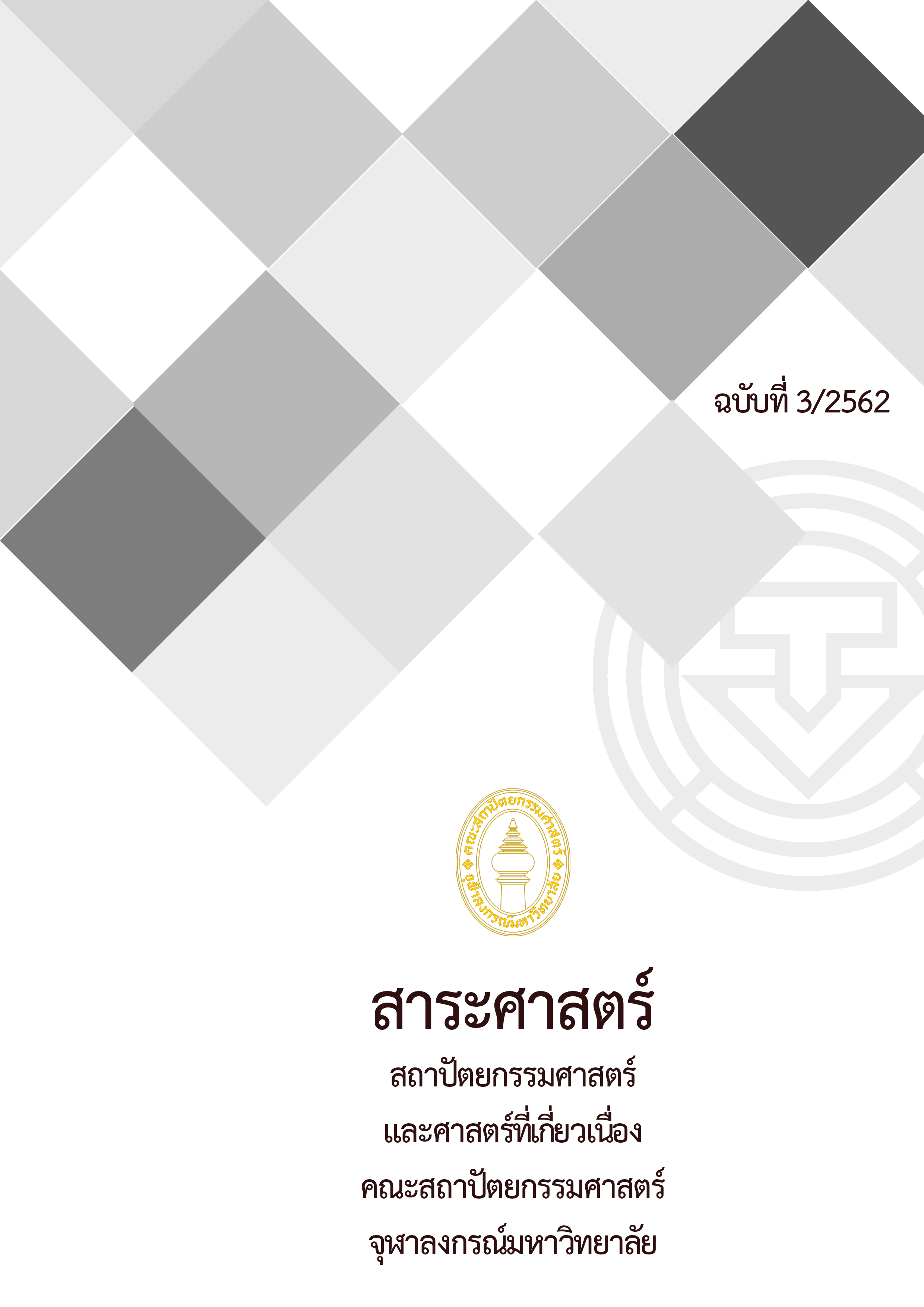Smart Home Concept of Pruksa Real Estate Plc., Sansiri Plc. & SC Asset Plc.
Main Article Content
Abstract
Due to technological advance, the concept of home automation, or Smart Home, is seeing an uptrend as being part of sale strategies currently. This study aims at exploring a smart home concept of Pruksa Real Estate Public Company Limited (Pruksa PLC), Sansiri Public Company Limited (Sansiri PLC), and SC Asset Corporation Public Company Limited (SC Asset PLC), by data accumulation from company’s websites, and interviews from October 1st 2018 to March 2019. Data was analyzed using key words and comparative categorizations.
The results of the study were as follows: (1) A smart home concept of Pruksa PCL focuses on the living of senior citizens, while Sansiri PCL’s and SC Asset’s smart home concept highlight fundamental aspects of living, and smart platforms and safety respectively. (2) Pre-built Smart Home devices can be divided into 4 categories: Smart Applications, Safety, Control, and Health. The pre-built device that can be found in every residential project at all price ranges is Smart Applications, while Control is mostly found in condominiums and some detached home projects. Health can also be found in some economy townhome projects. (3) The three studied companies have developed their smart home projects in accordance with their concept and marketing strategies. Pruksa PCL has managed to install Health devices in their town-home projects to support senior residents. Sansiri PCL has pre-installed Control devices (devices for lighting control, air-conditioner control, television control, and voice control system) in its condominium projects to preserve its strong leadership in lifestyle marketing. SC Asset PCL has pre-installed Safety devices in all of its residential property projects.
The study reflected the concepts of connecting smart devices in smart home projects of selected entrepreneurs. It also showed that luxury residential projects have more connected devices than those in lower levels. However, Safety devices could only be found in expensive projects, when, in fact, these fundamental devices should be in all projects as they were important to residents’ security, whose marketing aspect business entrepreneurs could benefit from.
Article Details
References
เจษฎา ขจรฤทธิ์, ปิยนุช ชัยพรแก้วและหนึ่งฤทัย เอ้งฉ้วน. “การประยุกต์ใช้เทคโนโลยี การประยุกต์ใช้เทคโนโลยี Internet of Things ในการควบคุมระบบส่องสว่างสำหรับบ้านอัจฉริยะ.” Journal of Information Science and Technology 7, 1 (January-June 2017): 1-11.
ณัฏฐกิตติ์ ศิริรัตน์. หัวหน้าสายงานการตลาด บมจ. เอสซี เอสแสท. สัมภาษณ์, 17 ตุลาคม 2561.
นิธิ กวีวิวิธชัย. “ถอดรหัสกระแสบ้านอัจฉริยะ.” สืบค้น 5 กุมภาพันธ์ 2562. www.prop2 morrow.com/2019/02/11/
ถอดรหัสกระแสบ้านอัจฉริ/.
ประภาพร กุลลิ้มรัตน์ชัย. “แนวโน้มเทคโนโลยีปัจจุบันกับการใช้งานในอนาคต.” วารสารวิชาการมหาวิทยาลัยอีสเทิร์นเอเชีย ฉบับวิทยาศาสตร์และเทคโนโลยี 10, 1 (มกราคม-มีนาคม 2560): 31-34.
ฟิลิป คอตเลอร์, เหมะวัน การตะจายาและไอวัน เซเตียวาน. การตลาด 4.0. พิมพ์ครั้งแรก. กรุงเทพฯ: เนชั่นบุ๊คส์, 2560.
มูลนิธิสถาบันวิจัยและพัฒนาผู้สูงอายุไทย. สถานการณ์ผู้สูงอายุไทย. พิมพ์ครั้งแรก. กรุงเทพฯ: สถาบันวิจัยประชากรและสังคม มหาวิทยาลัยมหิดล, 2561.
ศุภมาส ด่านวิทยากุล. “บ้านอัจริยะในยุคไอโอที.” วารสารเทคโนโลยีวัสดุ 84 (มกราคม-มีนาคม 2560): 31-34.
สมัติถ์ ต่างวิวัฒน์. ผู้ช่วยผู้อำนวยการฝ่ายการตลาดโครงการ บมจ. แสนสิริ. สัมภาษณ์, 16 ตุลาคม 2561.
สราณี จิระวารี. “ทิศทาง Intelligent Home ในประเทศไทย.” วิทยานิพนธ์ปริญญา วิทยาศาสตรมหาบัณฑิต มหาวิทยาลัยธรรมศาสตร์, 2548.
สุภัทร์ รัตนโสภณ. ผู้อำนวยการอาวุโสศูนย์นวัตกรรม บมจ.พฤกษา. สัมภาษณ์, 12 ตุลาคม 2561.
สุวิทย์ ภูมิฤทธิกุลและปานวิทย์ ธุวะนุติ. “Internet of Things เพื่อการเฝ้าระวังและเตือนภัยต่อสุขภาพของมนุษย์และการวิเคราะห์ข้อมูลที่ได้โดยใช้โปรแกรม Hadoop.” วารสารวิชาการปทุมวัน 6, 15 (มกราคม-เมษายน 2559): 61-72.


